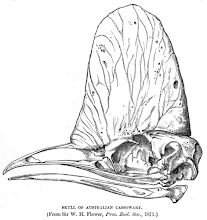exhibit a:
 using my highly developed forensic skills, i have attributed the death to an incident with a window.
using my highly developed forensic skills, i have attributed the death to an incident with a window.my support:
1) i found it in front of a very large, un-smudged window
i don't think you can see it in the photo, but the little tongue is sticking out of its mouth! typical.
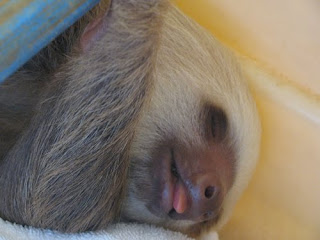
okay the picture of the sleeping sloth may or may not be completely unnecessary. i thought things usually died with their tongues out? guess not.
[incidentally, if you are looking for something to do, google image search "dead with tongue out." my safe search is on moderate, and there's still some pretty weird stuff coming up! exciting! [also to note: i do not condone nor condemn turning safe search OFF. i just...know my boundaries.]]
so i couldn't just leave this ickle dead hummingbird with its ickle tongue sticking out on the ground for some janitor or homeless guy to pick up and do lawd knows what with! so, i prepared my forensic kit and carried the body home in my backpack.
here were the contents of my my forensic kit:
1) a napkin from the dining center
2) hand sanitizer
i'm a natural!
 my main plan was to dissect ze petit oiseau, but that plan has been put on ice, as school has been in the way of me doing any proper dissections. [pun fully intended, did you catch it? come on i dropped it in your lap. frozen bird? plan on ice?]
my main plan was to dissect ze petit oiseau, but that plan has been put on ice, as school has been in the way of me doing any proper dissections. [pun fully intended, did you catch it? come on i dropped it in your lap. frozen bird? plan on ice?]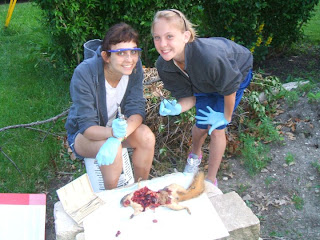
that's my sister and me with a squirrel that was tragically involved in a hit and run on our street. caught a lot of flack for dissecting that one.
... back to the hummingbird.
so, i had been continuing on with life with a very small, neglected, and dead apodiform in my freezer up until THIS was brought to my attention:

okay, you can't read the caption BUT my friend erin has a hummingbird nesting in her ficus tree! totally exciting! [more about eggs/nests here]
and so my interest in my ickle dead hummingbird with its ickle tongue sticking out has been reinvigorated! thanks erin!
the specific species my hummingbird-cicle is, as you might have guessed, the ruby-throated hummingbird, so named for its...ruby colored throat.
 male
malei say "as you might have guessed" because the ruby-throated is the only hummingbird native to iowa.
also, i'm going to venture to guess that the hummingbird in erin's ficus tree is an anna's hummingbird:
 they're pretty common in SoCal.
they're pretty common in SoCal.as you may have noticed, all of these hummingbirds seem to be hanging out around flowers. lemme tell ya, it's not just because they're both pretty. the birds feed on the sugary substance known as nectar that is produced by the flowers!
i just think it's so perfect that something as cute as a hummingbird would feed on not only sugar, but sugar from flowers. how aesthetically considerate of both parties!
i just think it's so perfect that something as cute as a hummingbird would feed on not only sugar, but sugar from flowers. how aesthetically considerate of both parties!

nectar isn't just sugar water, either, guys. depending on the plant, it can have other essential things for life, such as
1. amino acids [building blocks of proteins]
2. vitamins
3. metal ions [!]
4. proteins
wow! forget acai berries, nectar should be the next big thing!
the only problem is that nectar is rly rly hard to obtain. unless, that is, you have The Proper Equipment!

the nectaries, or the things that actually produce the nectar in a plant, are found at the velly bottom of the flower:
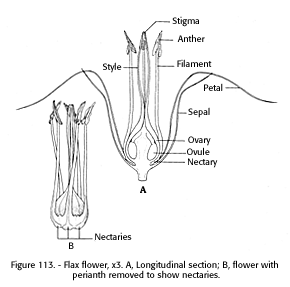
1. anthers are the parts that produce pollen, pollen being the male bits needed to produce viable seeds [think sperm]
2. pollen from one flower needs to be carried to a different flower's stigma to get to the ovule, the ovule being the female bit needed to produce a viable seed [think egg]]
 comin' atcha!
comin' atcha!
it follows that the next flower's stigma will get pollen attached to it from the hummingbird, bee, butterfly, et cetera and hopefully an ovule will be fertilized and become a seed!
 it's really a win-win situation! i like to think of it as support for the idea of co-evolution.
it's really a win-win situation! i like to think of it as support for the idea of co-evolution.
so, uh, why do we care about flowers? this is supposed to be about birds.
a probable reason these flowers have their nectaries at the bottom is so hummingbirds and bees and butterflies [and i guess some bats too] have to get all up in the flower to get to the nectar. in the process, these so-called pollinators get covered in pollen, which is then conveniently transported along to the next flower.
 comin' atcha!
comin' atcha!it follows that the next flower's stigma will get pollen attached to it from the hummingbird, bee, butterfly, et cetera and hopefully an ovule will be fertilized and become a seed!
 it's really a win-win situation! i like to think of it as support for the idea of co-evolution.
it's really a win-win situation! i like to think of it as support for the idea of co-evolution.so, uh, why do we care about flowers? this is supposed to be about birds.
WELL, flowers with nectar at the bottom have determined the morphology of our ickle dead red ruby throated friend, ESPECIALLY with regard to her ickle sticky-outy tongue!
though i speak from limited experience, it's really probably much easier to get to the nectaries at the bottom of a flower if you have a long skinny bill with a loooong skinny tongue.
and guess who has those features?
 woodpeckers! ha, gotcha!
woodpeckers! ha, gotcha!the above is actually a diagram of a woodpecker, but hummingbird tongue morphology follows the same principles.
to reach flowar nectaries, birds can't have a short bill with a short tongue muscle attaching at the base of the trachea. that would be like, i don't know, you trying to drink out of a bud vase. [tongue use only, no cheating!]

 don't be foolish, al!
don't be foolish, al!so, hummingbirds [like woodpeckers] have specialized structural features of their skull that allow for housing a long tongue. here's a picture of the skull:
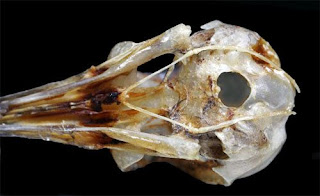
see that forked thingy? that's the tongue tract that eventually leads to the throat. it also just so happens to be The Proper Equipment to get dat nectar, allowing for the win-win interactions of flowers and hummingbirds. unless, of course, they're dead.

mmm, sugar water.


